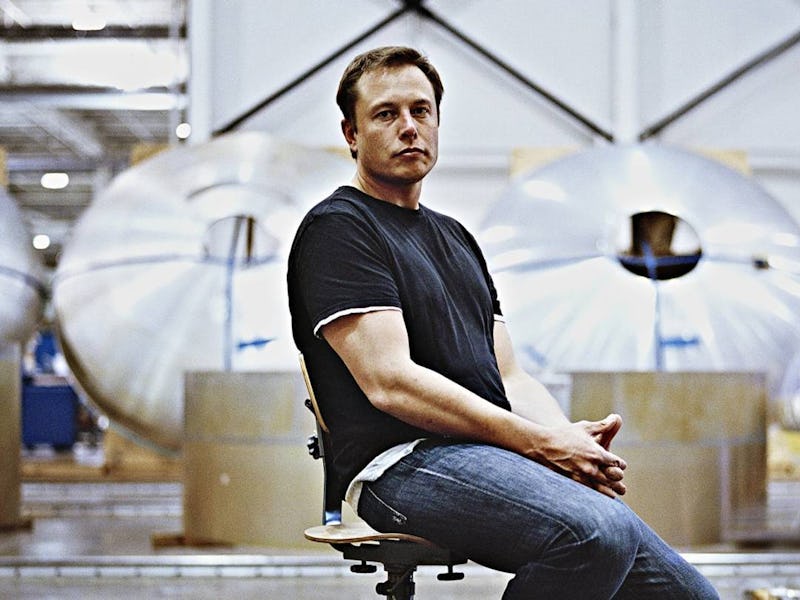Elon Musk has agreed to resign as chairman of Tesla for three years, while retaining his position as CEO, in an agreement with the Securities and Exchange Commission over a dispute concerning Musk’s plan to take the company off public stock exchanges. The move comes at a key moment for Tesla, as it seeks to roll out a series of new vehicles, continue its international expansion, and prove that building electric cars can be both environmentally sustainable and profitable. But there’s plenty of reason to think that the company’s new leadership structure could benefit Tesla in the long run.
The government agency’s complaint came after Musk claimed on Twitter that he had secured funding to take the company private at $420 per share, a claim the commission described as “false and misleading.” The settlement requires Musk and Tesla to pay fines of $20 million each, hire two new independent directors to the board and a new independent chairman, establish a new committee of independent directors and — perhaps most critically for the fast-tweeting Musk — place additional controls and procedures overseeing Musk’s communications.
“The total package of remedies and relief announced today are specifically designed to address the misconduct at issue by strengthening Tesla’s corporate governance and oversight in order to protect investors,” Stephanie Avakian, co-director of the SEC’s Enforcement Division, said in a statement.
Can Tesla still thrive without an equally outspoken Elon?
Can Tesla Still Thrive Without Elon Musk as Chairman?
Most big tech companies have to undergo some sort of leadership transition at some point, starting companies and running them are two different things. Musk’s move (while a touch more coerced) still echoes that of Bill Gates in 2000, where he handed his CEO title to Steve Ballmer but remained as chairman. The change means that Musk would retain responsibility for big decisions, just that he’s no longer completely insulated from board votes against some of his big ideas.
On the other hand, the new controls over communication could make Tesla a lot less fun to watch. While Musk could, in theory, continue to give a late-night thumbs-up to feature suggestions from fans over Twitter, it’s harder to see how he continues to do this in practice. The kind of off-the-cuff inventing that is so important to his online persona doesn’t really lend itself to getting a PR team and legal to sign off on each and every tweet, even if they get the Spaceball references.
What’s Next for Tesla?
Tesla plans to produce 50,000 Model 3 vehicles this quarter, while also planning to introduce a cheaper Model Y sports utility vehicle next year, release the Semi truck onto the roads next year, and start producing the second-generation Roadster in 2020. At the same time, the company plans to roll out full autonomous driving and develop a taxi service running via the system, while also shipping out an A.I. chip to power the software in vehicles. All of this will take place under the helm of Musk’s new reshaped position, although he himself admitted in a July interview that none of the challenges are “bet the company” situations similar to that of the original Roadster, Model S and Model 3 launches.
Tesla has also considered moving toward a less centralized leadership structure in the past. In April, Jing Zhao put forward a shareholder proposal seeking to appoint an independent director who could take over as chairman. The proposal argued that Musk has served as chairman since 2004, and CEO since 2008, an arrangement that was suitable in Tesla’s early stages. But as it has grown immensely since then, the company could benefit from an independent board oversight to minimize conflicts of interest in a larger firm:
An independent chairman of the board of directors is the prevailing practice in the international market, such as in the United Kingdom. In the United States too, many big companies already have or began to have an independent Board Chairman. Tesla should not be exception.
Recommending a vote against the proposal, Tesla’s board of directors wrote:
The Board believes that the Company’s success to date would not have been possible if the Board was led by another director lacking Elon Musk’s day-to-day exposure to the Company’s business. In light of the significant future opportunities for growth and the careful execution needed in order for the Company to achieve it, the Board believes that the Company is still best served by Mr. Musk continuing to serve as Chairman.
The board also noted that according to the 2017 Spencer Stuart Board Index, around 72 percent of S&P 500 companies do not use an independent board member. The proposal failed during the June 5 vote, but with the final settlement with the commission, Zhao’s argument has seen a new lease of life.
